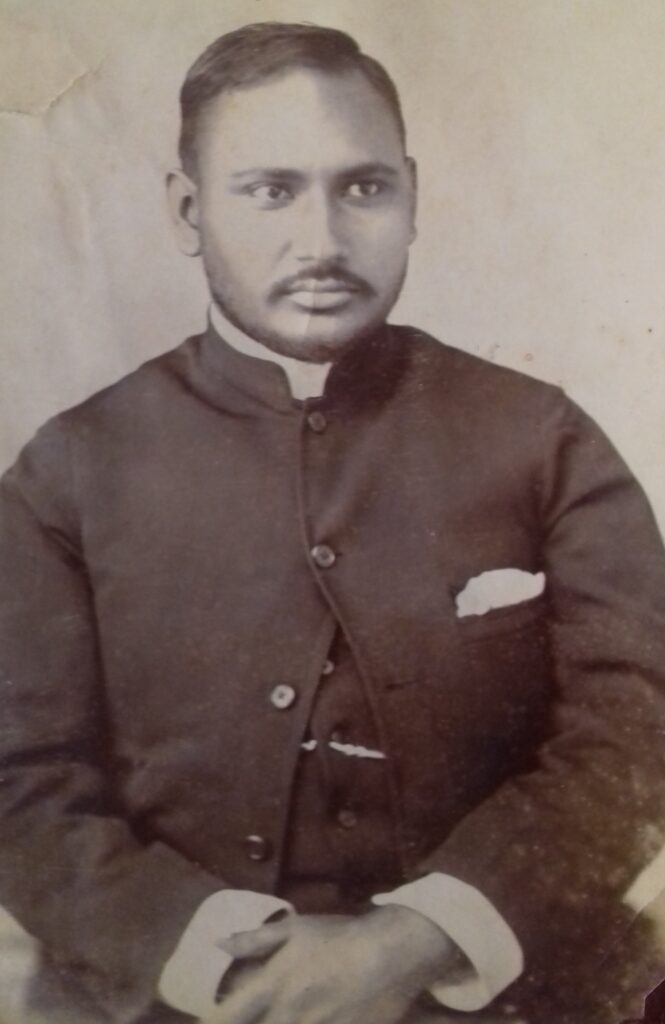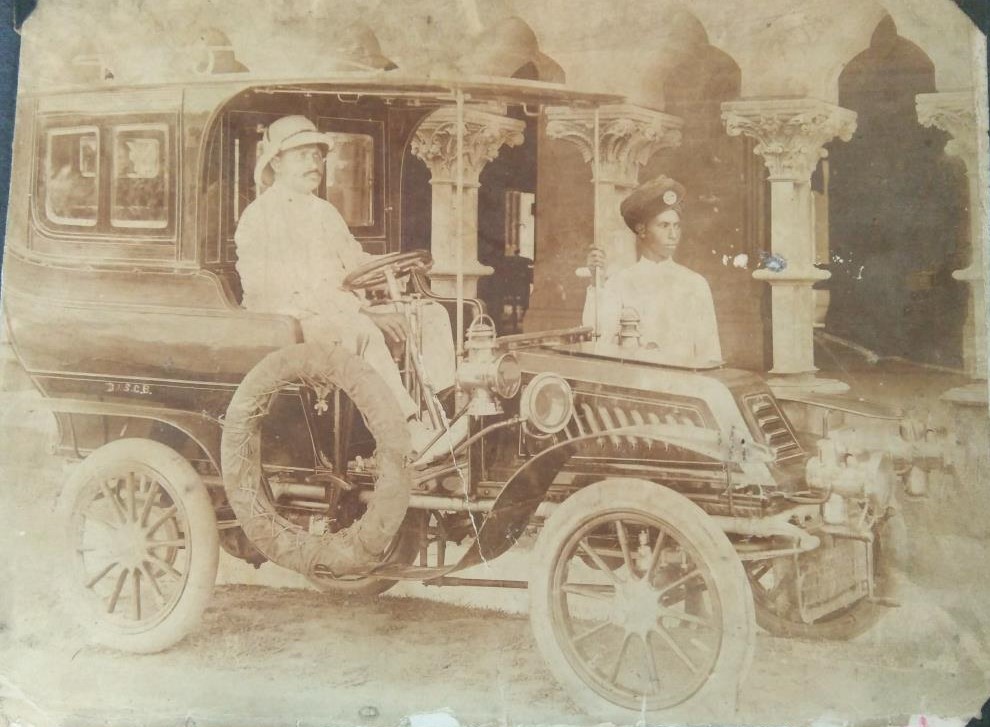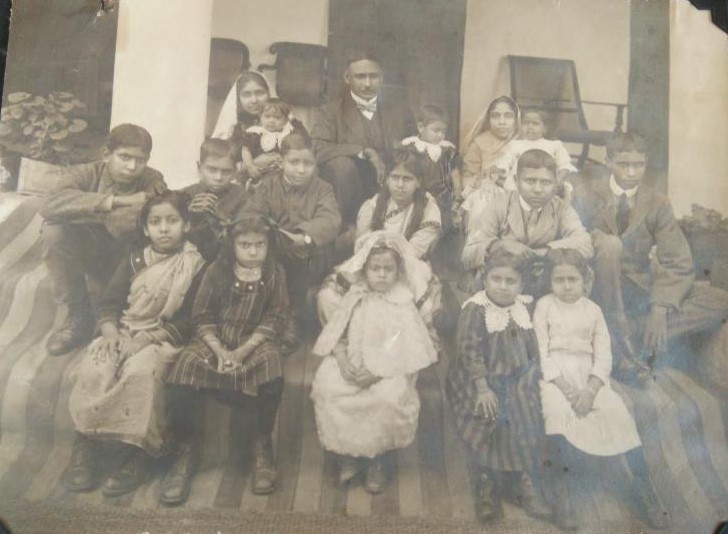
On 5th August 1921, a doctor passed away at his hill-top residence named ‘Alma House’ in Nainital. At the time of his death, he was four months short of his 49th birthday and had left behind his aged mother, his widow, six daughters and four sons (the eldest was in his twenty-first year while the youngest one was aged only four). When the news of his demise and cremation reached Allahabad — the place where he resided and practised — hundreds of people with teary eyes and broken hearts — flocked to his residence at 13 Edmonstone Road (presently known as Taskent Marg) situated on the Civil Lines lamenting the loss of someone very dear and extremely special. Right from the door-step till the main gate of the garden, one could see only uncountable heads mourning the loss of the doctor. But why were they mourning the demise of the one who was neither a celebrity nor a renowned political leader? It was from these assembled people that the doctor’s family came to know that the deceased — in his short life-span — had helped hundreds of people in various ways which included providing free medical services to the underprivileged, funding education of needy boys and paying for the restoration and renovation of ancient temples. Whatever he would earn was spent to serve the poor and destitute so much so that at the time of his death, he had hardly left behind any savings for his own family to survive. He was, in fact, one of those rare souls who considered serving the poor and needy the reason of his very existence. Such was Dr. Suresh Chandra Banerji — the doctor with a golden heart!
Born at Agra on 6 December 1872, Suresh Chandra Banerji was the third and youngest son of Justice Abinash Chandra Banerji and Nistarini Devi. Regarded as the first commentator on the Specific Relief Act in India, Justice Abinash Chandra worked as a Subordinate Judge and was posted in different cities of the United Provinces (now known as Uttar Pradesh) like Agra, Allahabad and Aligarh.
Nothing much is known about the early life of Suresh Chandra except that his early life was spent at Agra where his father was posted as a Small Court Judge. Unlike his two elder brothers Justice Sushil Chandra and Dr. Satish Chandra who followed the footsteps of Abinash Chandra and chose the judiciary as their profession, Suresh Chandra opted to study medicines. He joined and obtained his M.B.B.S. degree from Agra Medical School and started his practice at Allahabad where his family had shifted to in the last decade of the nineteenth century. It is important to note that he was the first physician in the Banerji family.
Early marriage was a custom in those days. In 1890, at the age of eighteen, when he was still a medical student, Suresh Chandra got married to the ten-year old Pankajini Devi, daughter of Aprokash Chandra Ganguly and Bisweswari Devi. They were blessed with six daughters (Kanaklata, Snehalata, Ashalata, Basantilata, Bonolata and Madhabilata) and four sons: Dr. Bijoyendu Bhushan (1900-1953), Bimalendu Bhushan (1905-1965), Amalendu Bhushan (1908-1992) and Ardhendu Bhushan (1917-2005).
Just as his elder brother Dr. Satish Chandra Banerji had made a name for himself as a scholar par excellence and a luminary in the world of law, Dr. Suresh Chandra too had carved for himself a niche in the temple of fame. By the time he was in the third decade of his life, he was counted among the respectable citizens of Allahabad. He was the family physician of the Nehrus and had ushered into the world Motilal Nehru’s youngest daughter Krishna Hutheesing (1907-1967) and Indira Gandhi (1917-1984) who went on to become India’s third Prime Minister. In 1904 he purchased an automobile — a Dedion — manufactured in France. Let’s not forget that this French car had to be imported in those days and only four men in Allahabad, rather in the entire United Provinces, were affluent enough to own it: Motilal Nehru, Sir Tej Bahadur Sapru, Sir Purushottam Das Tandon and Dr. Suresh Chandra Banerji.

Dr. Suresh Chandra Banerji with his ‘Dedion’ car in 1910.
Apart from being a successful physician with a large practice, Dr. Suresh Chandra Banerji was also a philanthropist like his father and elder brother, Dr. Satish Chandra. He had a sensitive nature and generous heart which wept at the sorrows of the destitute. Anyone who came to him seeking help never went back empty-handed. It seemed that he chose the medical profession so that he could serve people in distress. Money-making was never the objective of his life. It was the ideal of service that he cherished and that too without any vested interest. He strived for the betterment of society and improvement of medical needs among one and all. In an age where female education was not encouraged and remarriage of widows was considered a taboo, he was modern enough to preach the importance of both.
Aloka Mukherjee, granddaughter of Dr. Suresh Chandra, recalls: ‘His prowess in practice of medicine spread far and near in Allahabad… He took care of all stratus of families of that town. When he visited an unfortunate household driving his ekka (one-horse carriage) and found out that the family had no means of purchasing the medicines he prescribed, he delved into his pocket and gave them whatever money he found therein. He did not confess this act to anybody in his lifetime. This only came to be known after he passed away, declared by all those people that he had helped. They came to the house after they heard of his passing crying that they have lost their ‘father’ who had looked after them.’
She further adds:
‘Dr. Suresh Chandra had another quality that was seldom found in men-folk in those days. He helped the ladies of the household when suddenly guests came to the house after everyone had finished lunch. Since they had to be fed, my grandmother and her sister-in-law hurried to the kitchen to prepare food. My grandfather joined them in rolling out flatbreads to be fried. He actually helped in preparing lunch! …He helped the ladies in similar fashion many times.’
In June 1915, Dr. Suresh Chandra became the head of the Banerji family following the sudden demise of his elder brother, Dr. Satish Chandra. His eldest brother, Justice Sushil Chandra, had already passed away eighteen months earlier. He took upon himself the responsibility of keeping the big Banerji family together. Three years later, in 1918, Sushila Devi, widow of Dr. Satish Chandra, was diagnosed with advanced stage of tuberculosis. When she realized that her end was near, she would weep at the very thought of what would happen — in her absence — to her young and fatherless children as most of them were in their early teens while the youngest was only three years of age. Dr. Suresh Chandra assured her dying sister-in-law that as long as he was alive, he would protect them from every possible adversity. And he had kept his promise to the letter!
A year before his demise, in 1914, Dr. Satish Chandra had purchased a single-storey four-roomed house named ‘Alma House’ at Nainital. It was his ardent desire to convert the existing structure into a double-storey structure so that the entire family could be accommodated in it during the extreme summer months of Allahabad. Now that his beloved ‘Mejda’ (meaning second elder brother in Bengali) had left his physical body, Dr. Suresh Chandra took upon himself the responsibility of translating his late brother’s dream into reality. Despite the fact that the family income had taken a beating following the demise of Dr. Satish Chandra, Dr. Suresh Chandra pursued with the construction-work to accommodate the large joint Banerji family. Whenever he would find time, he would travel to Nainital to supervise the work of expansion of ‘Alma House’ for which he had borrowed a substantial sum of money. He got another floor constructed over the existing building and added more rooms to it. A garden with fragrant flowers and some fruit-bearing trees was also added. He would bring his family as well as the children of Dr. Satish Chandra to spend the summer months at ‘Alma House’ (the construction of which was finally completed after the death of Dr. Suresh Chandra and during the time of Indu Bhushan Banerji, the eldest son of Dr. Satish Chandra). Thus, he fulfilled a cherished dream of his deceased brother.

Dr. Suresh Chandra Banerji with his wife Pankajini Devi and their children, nephews and nieces at the ‘Alma House’, Nainital, in 1919.
The first edition of Dr. Satish Chandra Banerji’s magnum opus, The Law of Specific Relief in British India, was published in 1909. As the need to publish a second edition arose, Dr. Satish Chandra had begun to revise his work but could not complete it owing to his untimely demise. So Dr. Suresh Chandra and Indu Bhushan Banerji (eldest son of Dr. Satish Chandra) took up this work as a duty of love and reverence. Dr. Satish Chandra’s incomplete notes were entrusted to Dr. Surendranath Sen, a friend of Dr. Satish Chandra and an advocate practising at the Allahabad High Court, to complete the unfinished labours of the author. Thus, with a foreword from the pen of Sir Ashutosh Mookerjee, the second and revised edition of The Law of Specific Relief in British India was published by R. Cambray & Co., in 1917.
The demands of his profession and the strain undertaken to complete ‘Alma House’ took a toll on the health of Dr. Suresh Chandra. Towards the middle of 1921, he was diagnosed with dropsy. He shifted to Nainital to convalesce at ‘Alma House’— his beloved resting place. He had hoped that adequate rest and change of climate would improve his health but he soon realized that the lamp of his life was burning low and that the flame would soon flicker out. He instructed his third son, Amalendu Bhushan — who had just stepped into his teens and accompanied him to Nainital — to return to Allahabad, much against the wish of the youngster. And on 5th August 1921, Dr. Suresh Chandra Banerji breathed his last in one of the rooms facing the hillside on the first floor. He was cremated on the shores of Nainital lake.
The profession of doctors happens to be the noblest profession of all as its objective is to serve people selflessly. Yet most people choose this profession primarily to make money. The life of Dr. Suresh Chandra Banerji illustrates the fact that the true meaning of life lies not in enriching oneself but to help and serve people in distress. For, when one is dead and gone, he may not live for long in the hearts and memories of his family members and relatives for whose prosperity he had worked tirelessly. But one can surely live till eternity in the hearts of those whom he has served selflessly and unconditionally. For, by serving man, one serves the Divine. And the servitors of the Divine do not vanish into oblivion. They become immortal — just like Dr. Suresh Chandra Banerji.
*
About the Author: Born on 13th October 1984 to Jayanta and Sanghamitra Banerjee (eminent actress of Bengali cinema), Anurag Banerjee is an award-winning poet, essayist, researcher, biographer and translator. A former faculty at NexGen Institute of Business and Technology, Kolkata and Sri Aurobindo Centre for Advanced Research (SACAR), Pondicherry, he established the Overman Foundation, one of India’s leading research institutes dedicated to the ideals of Sri Aurobindo and the Mother, at the age of twenty-five in March 2010. He has lectured in several national symposiums and seminars organized by Sri Aurobindo Centre for Advanced Research, Sri Aurobindo Bhavan (Kolkata), National Council of Education and Jadavpur University and authored more than two hundred and fifty research papers which have been published in anthologies and journals of repute. He is a Trustee of Sri Aurobindo Sakti Centre Trust which runs the “Sri Aurobindo Bal Mandir” School at New Alipore, Kolkata. In April 2011, he received the prestigious ‘Nolini Kanta Gupta Smriti Puraskar’ awarded by ‘Srinvantu’ and Sri Aurobindo Bhavan, Kolkata. In December 2021 he received the ‘Shiksha Bharati Award’ from the Indian Achievers’ Forum ‘in Recognition of Outstanding Professional Achievement & Contribution in Nation Building’. He is a great-great-grandson of Dr. Satish Chandra Banerji, the doyen of Allahabad High Court and elder brother of Dr. Suresh Chandra Banerji.
*
Photographs courtesy: Alokesh Banerji and late Arun Kumar Banerji.
Its a proud moment to read about my self- effacing great grand father. And , more so, to see the sparks of family erudition and good intentions being carried forward in this generation also, the author being his fourth generation.
I don’t know how to praise you enough to take the onus up to write about our illustrious forefathers… surely they are blessing you.
Chotojathababu (Amalendu Bhushan Banerji) was indeed heartbroken when he was instructed by Dadu to return to Allahabad for his school. He made a promise never to return to Nainital as he had to leave the side of his father then, and he kept his word of never returning to Nainital till 1980s. Then in 1982, when we from Mumbai were planning to motor down to Nainital, my dad, (Ardhendu Bhushan Banerji) requested him to come down to Nainital for old time sake. This he did in the month of May 1982. That was his last visit. Hence you will not find him in any of the family group photographs of Nainital from 1924 to 1980
Excellent. At long last we have a concise account of our dear Grandfather. His looking after the extended family in those critical times is worth noting. Keep up the good work. Thanks again.
Dr Suresh Chandra Banerji was my great grand father, and I wasn’t aware of half the details that Anurag has managed to research and weave into an engrossing biography presented here! Kudos for a job well done and keep up the good work.
Great job! Just read the article once again. You have done an excellent job in researching details not widely known and weaving them into an engrossing read.
As usual you wrote a wonderful tribute to Dr. Suresh Chandra Banerji. I read the entire article this morning and feel honored to be his granddaughter.
Superb effort! There really are no words to express my appreciation on the depth of research that you have done on our ‘Kortas’ of old.
That is a wonderful account of my great grandfather. It makes me feel proud to be a descendent of such a noble personality. God bless you. Do keep educating us like this.
Superb! Thank you so much for giving us so much information and knowledge about our illustrious ancestors from my father’s maternal side.
Excellent tribute.
Thank you for immortalizing and remembering our respected Grandfather through your invaluable write-up.
Amazing research and excellent write-up. What the children and grandchildren never bothered to do, great-great grandson is achieving. God bless you. Feel proud of you. Good to know all this. Love.
Widely researched and very well written biography of Dr. Suresh Chandra. A humanitarian and philanthropist, a medical practitioner of great renown. Both the brothers were luminaries in their own respective professions. We, who belong to their family, knew so little about them. We are grateful to you for enlightening us and letting us know these minute details of their short yet fruitful existence in this world. “An hour of glorious existence is worth an age without a frame.”
Lovely write-up, appreciate your effort in collection of the minute details which were probably known to many of the family members.